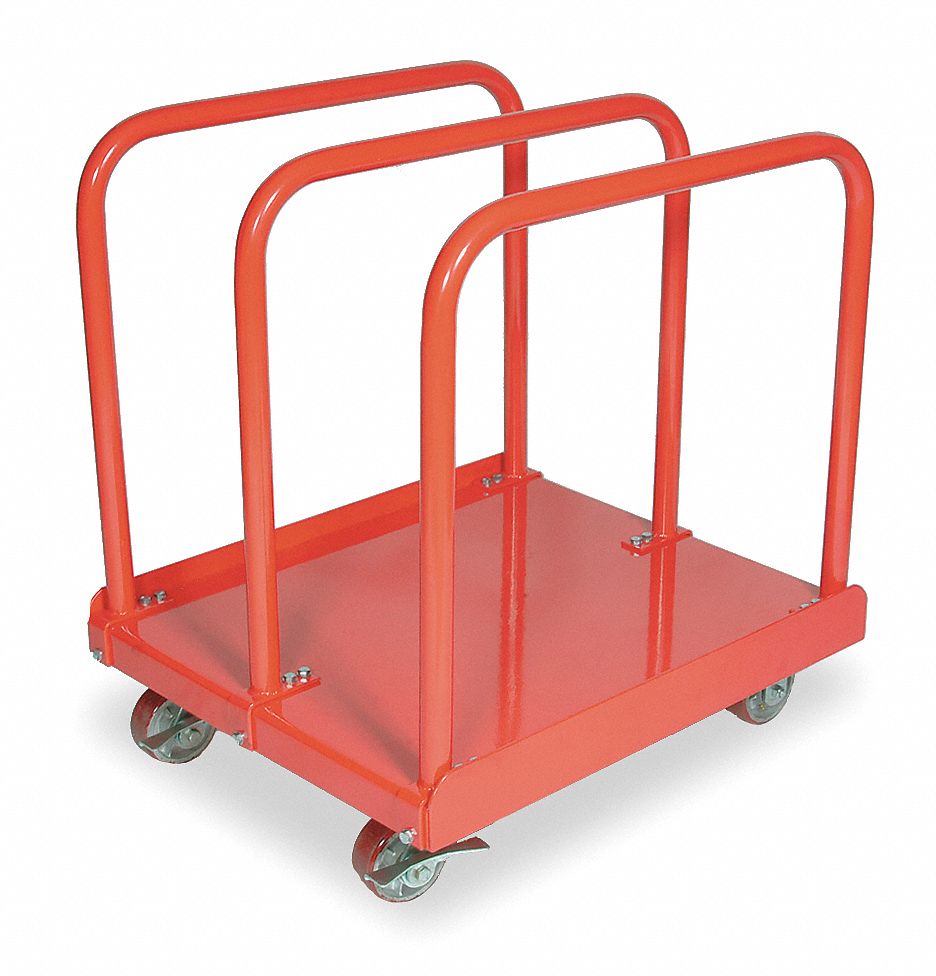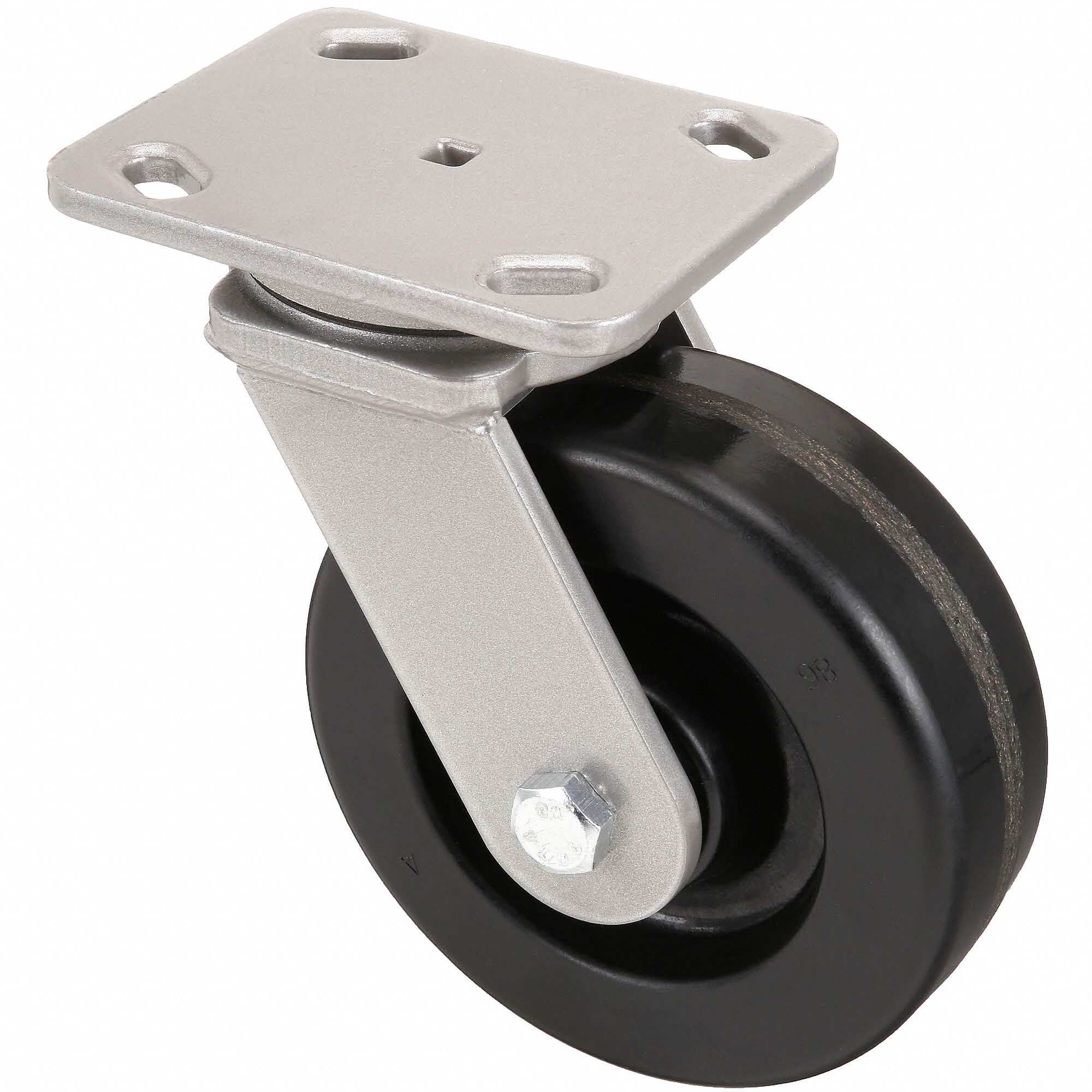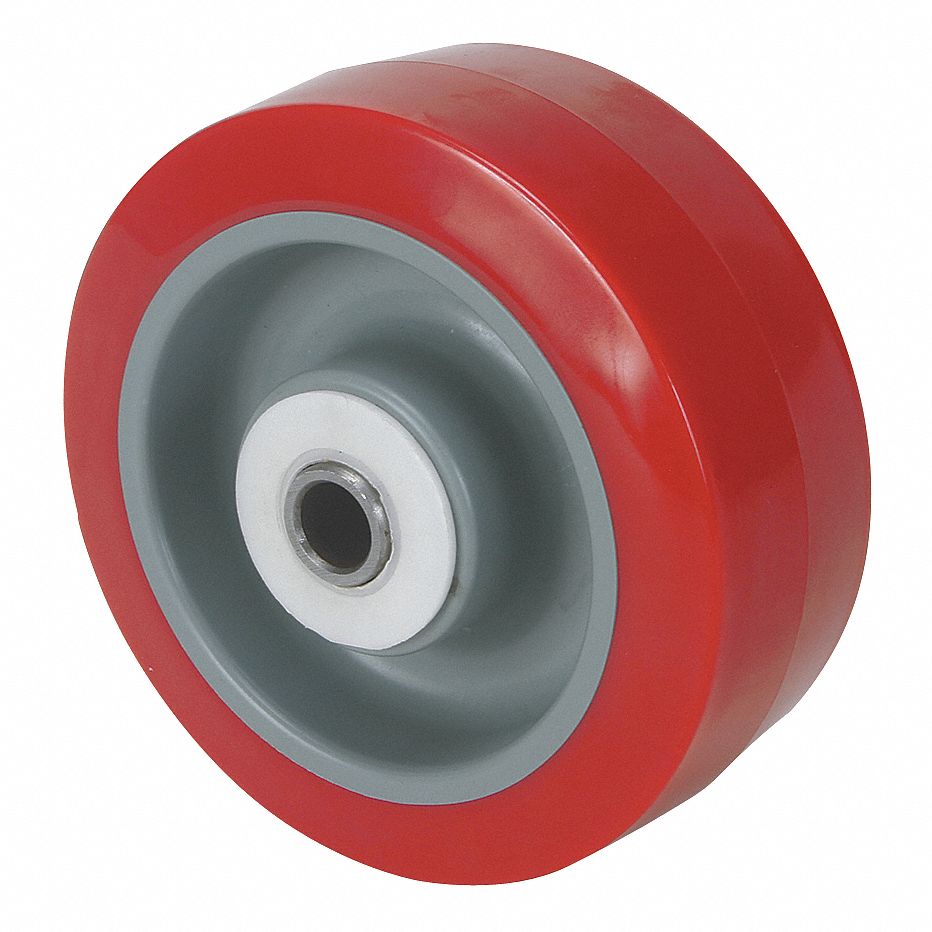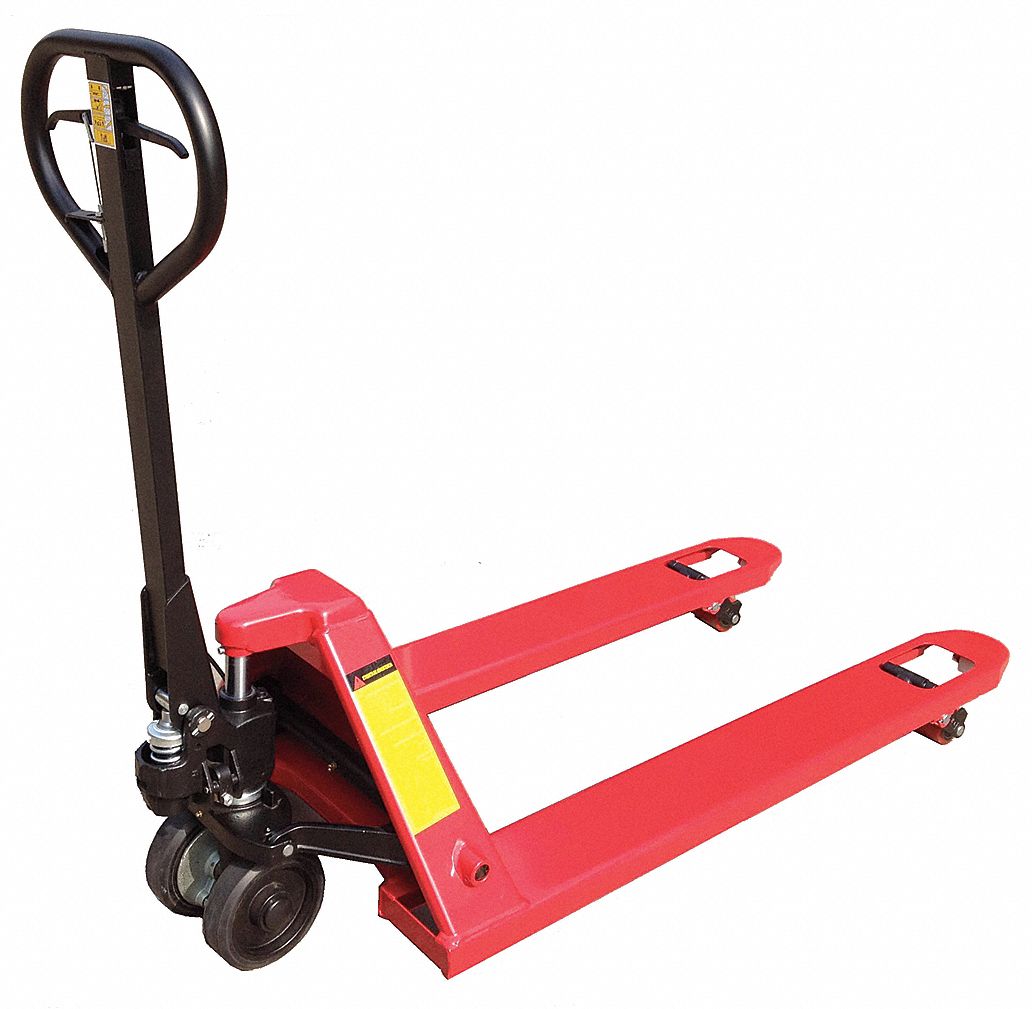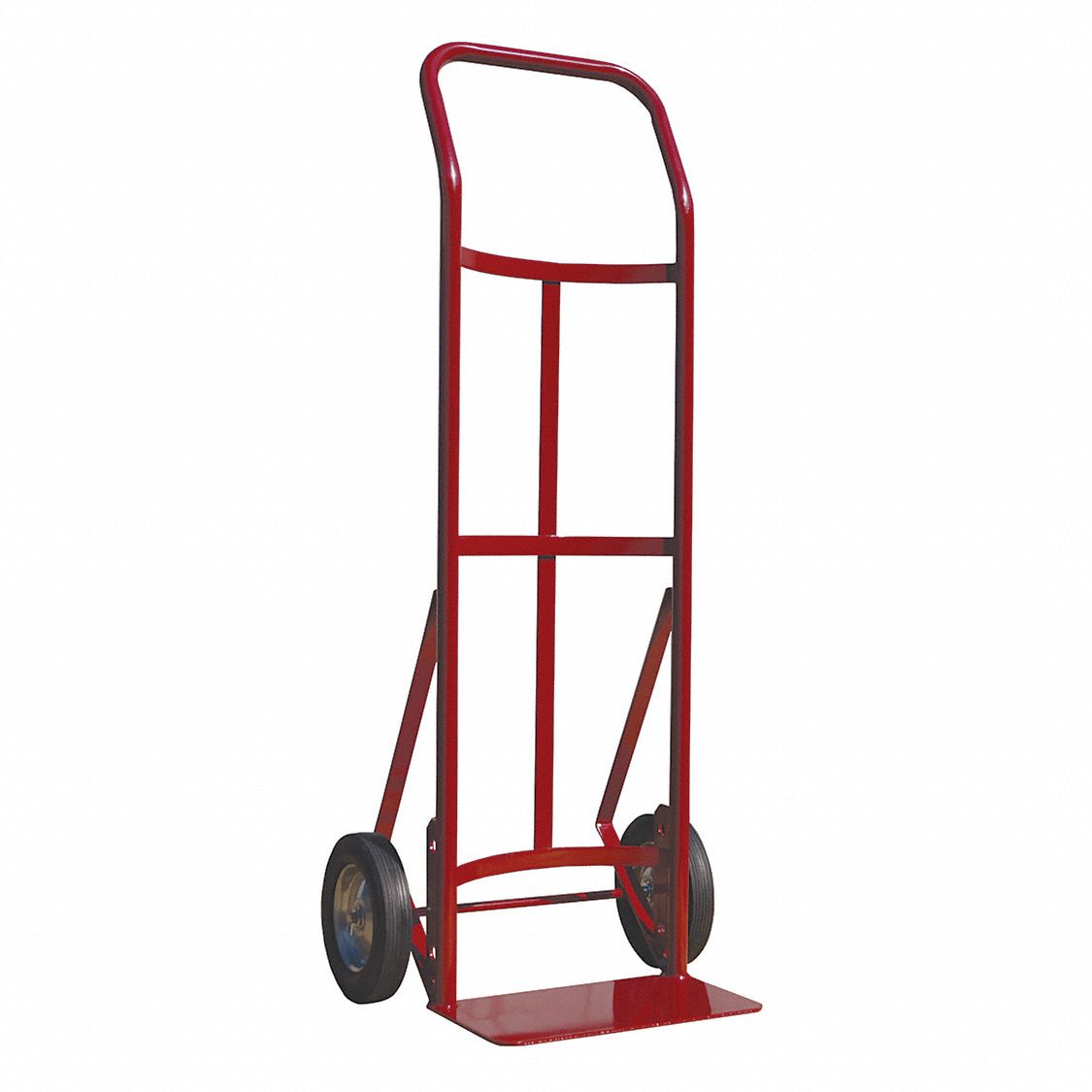

Types of Casters & Wheel Guide
By Grainger Editorial Staff 4/7/21


A caster is an assembly that includes a wheel and a mount. Casters support and make it easy to maneuver carts, racks, dollies and other equipment. Casters come in different materials, wheel diameters, tread widths, load ratings and overall heights to give your equipment mobility in many kinds of work environment.
To help determine which type of caster best fits your needs, think about these questions:
- How heavy are the loads that these casters will need to support?
- Is the working environment wet or oily?
- Is exposure to chemicals or corrosives a concern?
- What temperature range will the casters be exposed to?
- What floor or surface type do you need to maneuver across?
- Are aesthetics or noise reduction a concern?
- Are brakes needed?
- Will the casters be used for powered towing?
- Do you need certifications in CA Prop 65, NSF for food service use or other standards?
Maneuverability: Rigid Casters, Swivel Casters, Kingpinless Swivel Casters
When considering maneuverability, there are two basic kinds of caster: rigid casters and swivel casters.
- A rigid caster, also known as a fixed caster, is only able to roll forward and backward.
- A swivel caster has a raceway that allows the wheel to turn. The raceway is the cylindrical portion of a swivel caster containing the ball bearing track or tracks.
The traditional swivel caster design relies on a kingpin, which is a bolt or rivet that holds the raceway together. In this design, the kingpin is subject to high levels of stress, especially from the shocks that result when the equipment runs into obstacles or when heavy weights are dropped onto it. Because of this, the kingpin is a frequent failure point for traditional swivel casters.
A kingpinless caster is a special type of swivel caster with a raceway that is not held together by a bolt or rivet. Stress is distributed more evenly, which means that kingpinless casters typically last longer than traditional swivel casters. They are recommended for powered towing applications because they can better withstand the stress caused by turning at speed. They are also better at handling shock forces such as rough terrain, obstacles and drops. However, kingpinless casters typically have a higher initial cost than traditional swivel casters.
Rigid and swivel casters can be used in different configurations for different applications:
- The most common caster configuration uses two parallel swivel casters and two parallel fixed casters. This gives the cart good turning and straight-line travel capabilities.
- Carts with only swivel casters are easy to move in any direction, which is useful for maneuvering lighter loads in tight locations, but they are hard to control. Swivel locks on two of the casters can make straight-line travel easier in this configuration.
- Four rigid casters in a diamond pattern can be a cost-effective arrangement. In this configuration, the central pair of casters on the left and right sides is typically slightly taller than the pair on the front and back sides. This makes the cart relatively easy to turn and pivot when the load is arranged over the central fixed casters.
Caster Wheel Materials and Dimensions: General Characteristics
Wheel materials and dimensions are important to consider when selecting casters. What a wheel is made from, and how large or small it is, influences how easily it moves (which in turn influences the ergonomics of the cart) , how durable it is, how much noise it makes and more.
Carts with wheels made from harder materials will generally be easier to get moving than those with wheels made from softer materials. That's because wheels made from harder materials have lower starting resistance, especially as the weight of the load increases. Starting resistance is the force the must be overcome to put the wheels in motion when they're at rest. Wheels made from harder materials also have lower rolling resistance, which means it takes less force to keep them moving at a constant speed.
Wheels made from softer materials are generally quieter and more comfortable to use because they transmit less vibration. They can also help preserve soft floor materials, such as hardwood or tile, which might be damaged by a harder wheel.
Comparing Wheel Hardness: Shore A, Shore D, Brinell
In general, rubber casters are softer than plastic casters, which are softer than metal casters. The hardness of specific casters is rated using three scales:
- The Shore A scale is used for softer rubbers.
- The Shore D scale is generally used for harder rubbers and plastics.
- The Brinell scale is used for metals, which are given a Brinell hardness number (BHN).
Within each scale, higher numbers indicate harder materials.
Wheel Dimensions
The diameter and width are the two measurements that give the dimensions of the wheel. The diameter is the height of the wheel. (The total height of the caster includes the wheel and the mount.)
In general, wheels with greater diameter and width have lower starting resistance and rolling resistance—it's easier to get them moving and keep them moving. They can withstand heavier loads, and they are generally quieter.
However, wheels with greater diameter also give the cart a higher center of gravity, which can make it less stable, especially with heavier loads stacked higher on the cart.
The chart below summarizes how wheel material and dimensions can generally affect equipment performance.
| Load Capacity | Starting and Rolling Resistance | Noise | Comfort for Person Pushing the Load | |
|---|---|---|---|---|
|
Harder Wheel Materials |
Higher load capacity |
Easier to start and to keep rolling |
Noisier |
Less comfortable |
|
Softer Wheel Materials |
Lower load capacity |
More resistant to starting and rolling |
Quieter |
More comfortable |
|
Larger Wheels |
Higher load capacity |
Easier to start and to keep rolling |
Quieter |
More comfortable |
|
Smaller Wheels |
Lower load capacity |
More resistant to starting and rolling |
Noisier |
Less comfortable |
Caster Wheel Materials: Specific Characteristics
This chart describes the characteristics of many caster wheel materials.
| Wheel Material | Characteristics |
|---|---|
|
High-capacity and abrasion-resistant for easy rolling and long service life on concrete. High-temperature options available. |
|
|
Superior resistance to breakage, cracking and chipping for long service life in the most severe applications. |
|
|
Forged steel |
Nearly indestructible in normal applications and long service life. Used where floor protection is a secondary consideration, or for use on steel plates. |
|
Will not chip, absorb water or break down in caustic environments. High-temperature options available. |
|
|
Rejects debris while offering the same great features as a pneumatic wheel without going flat. |
|
|
High resistance from oil and chemicals while providing sufficient cushioning to substantially lower or eliminate shock, vibration and noise levels. |
|
|
Withstands solvents, corrosive environments and temperature extremes |
|
|
Floor protective and highly resistant to oil, grease, gasoline and mild acids. Recommended for use on smooth concrete. NR for wet applications or use over rough surfaces. High-temperature options available. |
|
|
Lightweight, one-piece solid sanitary design suited for use in wet and corrosive applications. |
|
|
Resists absorption and withstands most chemicals and solvents. |
|
|
Easy-rolling wheels cushion loads, protect floors and offer superior chemical resistance. |
|
|
Long-wearing wheels provide floor protection and quiet operation. Includes pneumatic, semipneumatic and flat-free options. |
|
|
Strong and durable design. Ideal for use in wet, corrosive or sanitary environments. |
|
|
Provides strength and shock resistance with long service life and economy for use in rough service conditions. |
|
|
Chemical- and water-resistant. Absorbs shock and protects floors while providing easy rollability. High-temperature options available. |
|
|
Vulkollan |
Highest quality polyurethane. Extremely durable with excellent abrasion resistance. Easy to roll. |
Wheel Material and Floor Compatibility
This chart indicates how different wheel materials perform on different floor materials: excellent, good, fair or not recommended (NR).
| Finished Wood Floor | Finished Concrete Floor | Concrete Floor | Ceramic Tile | Vinyl Asphalt Rubber Tile | Oil, Grease, Solvents | Alkaline – Inorganic | Metal Chips on Floor | |
|---|---|---|---|---|---|---|---|---|
|
Forged Steel |
NR |
Fair |
Good |
NR |
NR |
Good |
Fair |
Fair |
|
V-Groove Forged Steel |
NR |
NR |
NR |
NR |
NR |
Good |
Good |
NR |
|
V-Groove Iron |
NR |
NR |
NR |
NR |
NR |
Good |
Fair |
NR |
|
V-Grove Polyurethane |
NR |
NR |
NR |
NR |
NR |
Good |
Good |
NR |
|
Cast Iron |
NR |
Fair |
Good |
NR |
NR |
Good |
Good |
Fair |
|
High-Temperature Phenolic |
NR |
Excellent |
Excellent |
NR |
Fair |
Fair |
Fair |
Fair |
|
High-Temperature Nylon |
NR |
Excellent |
Excellent |
NR |
Fair |
Fair |
Fair |
Fair |
|
Polyolefin |
Fair |
Excellent |
Excellent |
Fair |
Fair |
Excellent |
Excellent |
Fair |
|
Hard Rubber |
Good |
Good |
Good |
Fair |
Fair |
Good |
Good |
Fair |
|
Soft Rubber |
Good |
Excellent |
Excellent |
Good |
Good |
Good |
Good |
Excellent |
|
Rubber on Aluminum |
Good |
Excellent |
Excellent |
Good |
Good |
Good |
Good |
Excellent |
|
Rubber on Cast Iron |
Good |
Excellent |
Excellent |
Good |
Good |
Good |
Good |
Excellent |
|
Thermoplastic Rubber |
Good |
Excellent |
Excellent |
Good |
Good |
Good |
Good |
Excellent |
|
Pneumatics |
Good |
Excellent |
Excellent |
Good |
Good |
Fair |
Fair |
NR |
Caster Load Rating
The load rating of each caster adds to the overall capacity that can be supported. Each caster represents an incremental increase in load rating capacity. To find the load rating for each caster that is necessary for your application, divide the weight of the load—including the weight of the cart itself—by the number of casters.
For a safety factor, remove one caster and divide the weight of the load to get the load rating for each caster. Consider a higher safety factor for powered towing and for use outdoors or in areas where the wheels may roll over tall obstacles.
How to Measure Caster Wheels and Casters
Measuring casters and wheels on existing equipment can help you find appropriate replacements. When measuring, collect the following information for all casters:
- Overall height
- Wheel diameter
- Wheel width
- Swivel radius (the horizontal distance between the center of the raceway or kingpin and the furthest edge of the wheel)
Unique dimensions will also need to be collected for each mounting type (plate, stem, bolt hole).
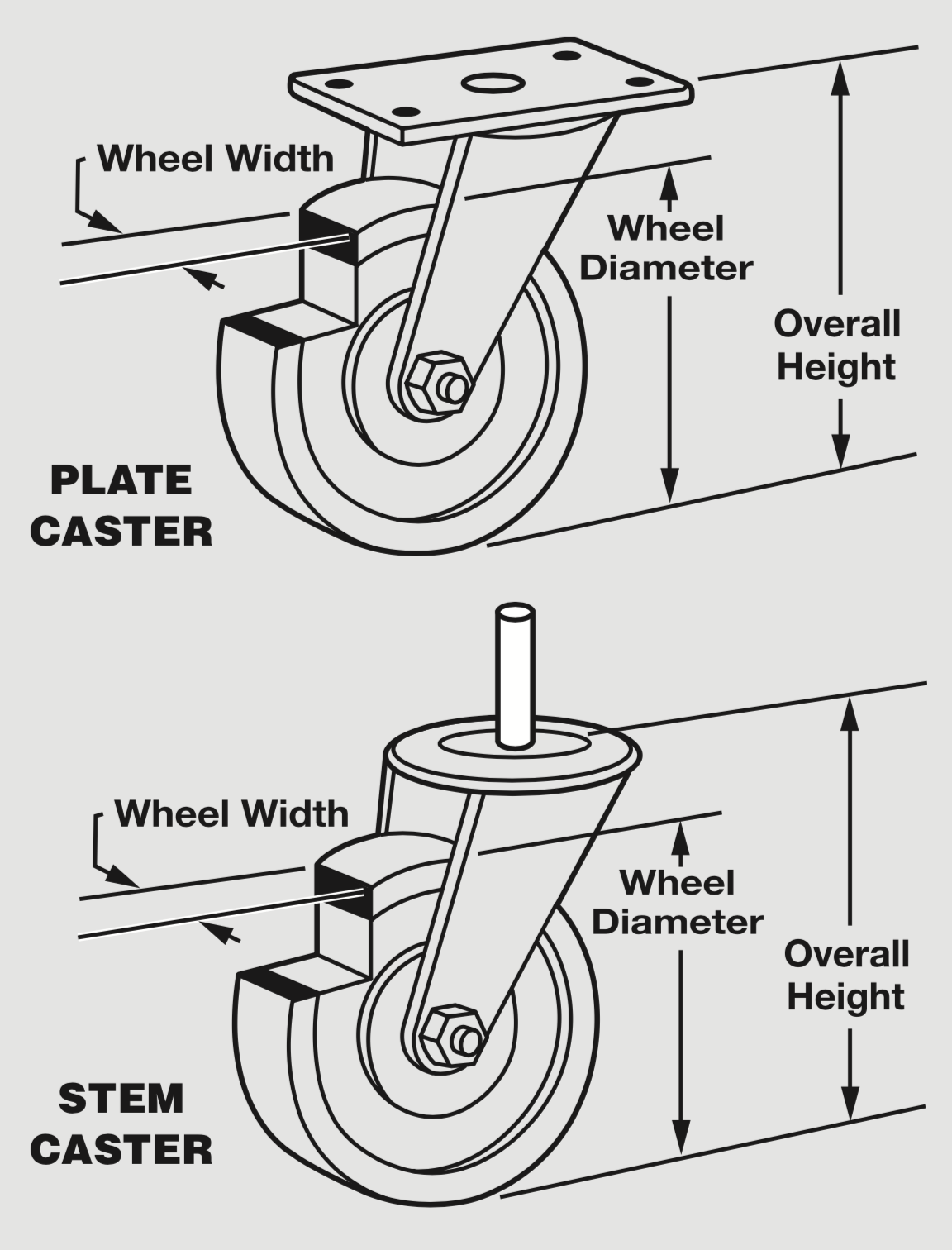

Caster Mount Type
There are three basic types of caster mount:
- Plate: Attaches using bolts through designated bolt holes in the top plate.
- Stem: Uses a stem as the attaching device.
- Bolt hole: Stemless caster where a standard bolt is inserted into the hole and bolted to the equipment.
Caster Plate Types and Bolt Hole Spacing
There are four basic caster plate configurations. This table shows how to measure the plate size, inside bolt hole spacing and outside bolt hole spacing for each configuration.


Caster Stem Dimensions
For the dimensions of a caster stem, measure the stem length, the stem diameter, the hole location and the hole diameter.
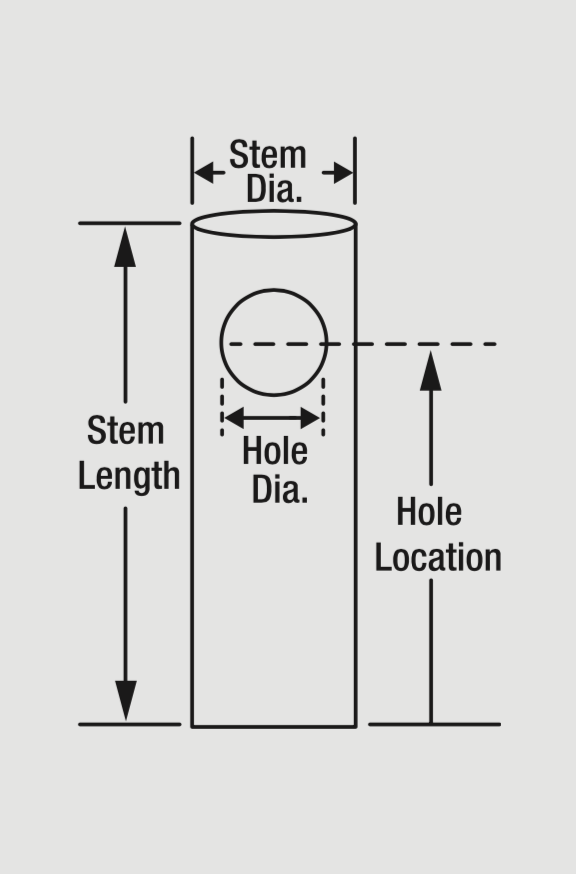

Caster Stem Types
Common types of caster stem are shown below.

Threaded

Grip Neck

Two Friction Ring
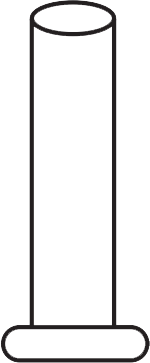
Round
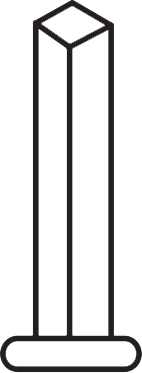
Square
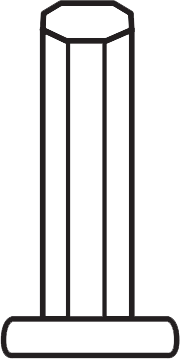
Octagon
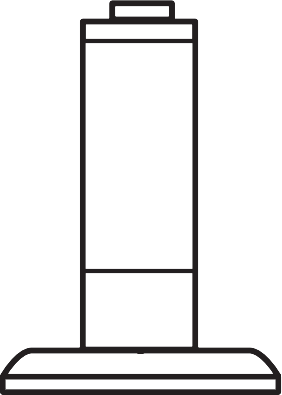
Expanding Adapter

Threaded Ladder
Frequently Asked Questions
Q: What's the difference between caster brakes and caster locks?
A: Caster brakes and locks help control the mobility of the wheel in different ways:
Q: What's the difference between pneumatic, semi-pneumatic and flat-free casters?
A: Pneumatic, semi-pneumatic and flat-free casters provide different levels of cushioning against shocks and vibration, and they also differ in their susceptibility to damage and their maintenance requirements:
Q: Are forged wheels stronger than cast wheels?
A: To make cast iron wheels, the metal is heated until molten and poured into a mold to give it shape. To make forged steel wheels, the metal is heated until it is flexible but not molten, then shaped under intense pressure, cooled and machined into their final shape. Although cast metal wheels are very strong and durable, forged wheels are typically even stronger and more durable.
Q: What's the difference between starting resistance and rolling resistance?
A: When a cart is at rest and you want to get it moving, you are working against its starting resistance. When a cart is in motion and you want to keep it going, you are working against its rolling resistance. It's usually better for starting resistance and rolling resistance to be low because that means it take less effort to move the wheeled equipment around. In general, wheels that are larger and harder have lower starting and rolling resistance.
Q: What is a caster's swivel radius?
A: The swivel radius is a measurement indicating much space a caster needs for the wheel to fully swivel. To measure the swivel radius, start at the center of the kingpin or swiveling raceway, and measure the horizontal distance (in other words, parallel to the floor) between that point and the wheel's farthest edge.
The information contained in this article is intended for general information purposes only and is based on information available as of the initial date of publication. No representation is made that the information or references are complete or remain current. This article is not a substitute for review of current applicable government regulations, industry standards, or other standards specific to your business and/or activities and should not be construed as legal advice or opinion. Readers with specific questions should refer to the applicable standards or consult with an attorney.

